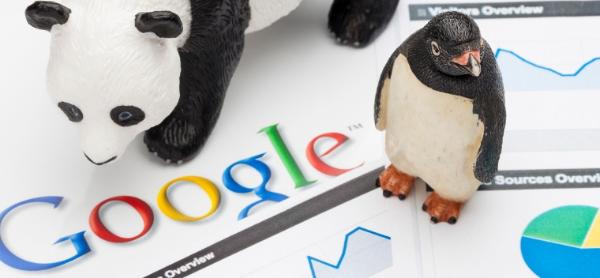Google is always updating their search ranking algorithms. A couple weeks ago, they released their latest algorithmic change, Panda 4.2. But this is only one update – Google releases over 500 updates every year!
As marketers, we want to have supreme SEO but it’s hard to keep up with all the changes Google makes. Your SEO tactics may work for you today, but could hurt you tomorrow. If you want to have long-term sustainable SEO, it’s better to understand what each core change to the algorithm represents.
Here are the four main revisions to Google’s algorithm used to rank your content:
1. Panda
The Panda updates are focused on ranking websites higher that have better content. By better, we mean content that’s original, engaging, useful, and understandable. Google implemented Panda because too many low-quality, keyword-stuffed, and plagiarized pages were making it into the results.
Finding useless content sucks. Panda acts like a judge for Google. It makes sure your content meets a qualitative standard.
In our opinion, Panda is the single-most important algorithm update to orient around because, as you will see, Panda drives intention behind Google’s other algorithms.
Does your content meet Panda’s criteria? Here are a few questions to ask yourself:
- Is my content awesome?
- Does it provide value?
- Would I bookmark it?
- Did I write the content myself?
- Am I the sole owner of this material (i.e. it’s not found on other websites)?
- Does my content read like a magazine article?
- Is my content natural (i.e. not stuffed with keywords)?
2. Penguin
Penguin, unlike Panda, is focused on what happens off your website. It focuses on punishing content with manipulative backlinks. Having others link to your site is usually a good thing, but if these links are unnatural, spammy, or paid for, Google things you’re trying to cheat them. (Because you are.)
Not all links are created equal. After reading what Panda represents, you should want to create content that others will want to link to.
The most valuable backlinks are natural, and come from authoritative websites.
So, how can our content get more legitimate backlinks?
- Build awesome content.
- Encourage sharing.
- Avoid spammy techniques.
3. Pigeon
The Pigeon updates give preference to websites that are considered geographically local to the searcher. For instance, a search for “pizza” brings up local pizza shops ahead of Pizza Hut. Pigeon gives local businesses a fighting chance to appear in the search results.
If you want your website to take advantage of a local preference, Google needs to know where your organization is located. Besides a Contact Us page, you can list your website on local directories:
- Google’s My Business (obviously number one)
- Yahoo Localworks
- YellowPages
- Yelp (if Food & Entertainment)
- TripAdvisor (if Travel)
4. Hummingbird
Hummingbird is all about the search query itself. The algorithm understand the intention and context behind a search query in order to deliver better search results. For instance, a search for “weather” displays the current temperature outside rather than a scientific article explaining the natural causes of weather.
Similar to Panda, Google needs to understand your content in order to cross-reference it with a search query. It’s another sign that keyword-stuffing is dying and Google is moving in the direction of ranking quality content higher.
The SEO bottom line: be genuine!
Google is penalizing companies that try to game the system. Focus on creating really awesome content that people want to share!
John is the Founder & CEO of Wriber. He’s passionate about entrepreneurship, high-tech startups, thought leadership, content marketing, and artificial intelligence. John frequently volunteers his time at the University of Waterloo to help young entrepreneurs get their businesses off the ground. He’s also a faithful Toronto Maple Leafs fan, frequent Redditor, and lifelong learner.

